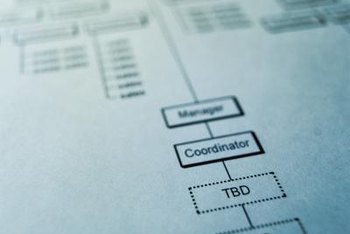
An organizational chart in human resources helps companies visualize their workforce structure, track open positions, and identify potential staffing gaps. These charts illustrate all employees in a department—or across the entire organization—highlighting each person’s role and reporting relationships. Typically designed in a pyramid format, organizational charts make it easy to see authority levels and team hierarchy at a glance.
Steps to Create a Human Resources Organizational Chart
1. Begin with the top position
Start by placing a box at the top of your chart for the head of the company or the department, depending on the scope of your chart. Include the individual’s name, department, and job title. This box represents the highest level of authority in the hierarchy.
2. Add direct reports
Draw a row of boxes beneath the top position—one box for each person who reports directly to the head. Include their names, titles, and departments. Space the boxes evenly and connect them to the top box with vertical lines to show the reporting structure clearly.
3. Map the next level of employees
For each person in the second row, draw vertical lines connecting to boxes representing their direct reports. For example, if two managers each supervise three employees, draw three lines from each manager to prepare for the third-row boxes. Laying out the lines first helps maintain proper spacing and alignment for the next level.
4. Fill in the third level
Attach boxes to the connecting lines and include the names, titles, and departments of the employees reporting to each manager. Ensure each box aligns neatly under the correct supervisor.
5. Continue downward
Repeat the process for all subsequent levels in the organization. Consider including boxes for open positions, leaving room for future hires. Update the chart as positions are filled or the structure changes to keep it current.
An up-to-date organizational chart provides HR teams and managers with a clear picture of reporting relationships, workforce gaps, and staffing needs, making it an essential tool for effective human resources management.








